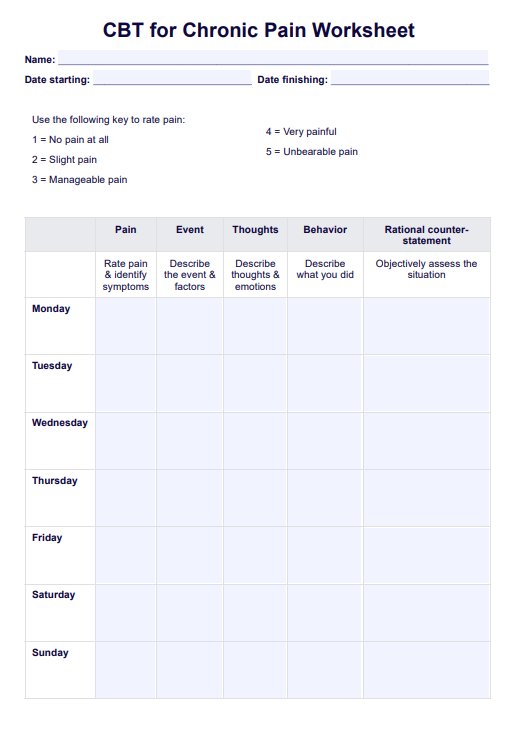The CBT for Chronic Pain Worksheet can have an array of benefits for therapists and clients dealing with chronic pain symptoms. As a structured document, it encourages self-reflection that provides insight into the inner workings of the individual's thinking and behaviors, which can then be used to develop strategies to alleviate symptoms.

CBT for Chronic Pain Worksheet
vLearn how cognitive behavior therapy can alleviate chronic pain management, and receive a free CBT for Chronic Pain Worksheet!
Use Template
CBT for Chronic Pain Worksheet Template
Commonly asked questions
Chronic pain is persistent pain that extends over three months. It usually exists as a cycle of chronic pain that is often accompanied by poor mental health, sleep problems, and low mood.
The worksheet is most typically used as a resource to support CBT techniques targeting chronic pain. However, its flexibility can also be used for chronic pain education, locating causality, and reviewing treatment plans.
EHR and practice management software
Get started for free
*No credit card required
Free
$0/usd
Unlimited clients
Telehealth
1GB of storage
Client portal text
Automated billing and online payments











